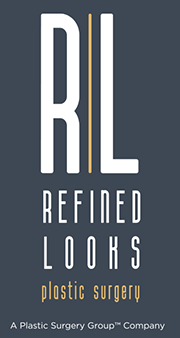Turkey Carving Safety Tips
Thanksgiving is quickly approaching, and with that comes family gatherings, great food, and unfortunately for too many individuals, hand injuries. Far too often, individuals suffer hand lacerations or other injuries at the expense of carving the all-important turkey at Thanksgiving dinner. However, many times, your risk of injury could be greatly reduced by taking the time to consider your environment. Therefore, several recommendations have been outlined in an effort to decrease your chances of injuring yourself this Thanksgiving.
First and foremost, you should never cut towards yourself when attempting to carve your turkey (American Society of Surgery for the Hand, 2023). Not only should you avoid cutting towards your body, but you should also be aware as to where your opposite hand is when stabilizing the turkey. By cutting away from your body, you significantly decrease your chances of laceration, even if the knife were to slip. Utilizing a carving fork is an effective way to avoid placing a stabilizing hand on the turkey. The carving fork will stabilize the turkey, while keeping your hand away from the sharp knife. Having the proper utensils should always be the first step in safely carving a turkey.
On the subject of proper carving utensils, it is of utmost importance to keep your knives as sharp as possible, as dull knives will call for increased force and thus increase the likelihood of lacerations (ASSH, 2023). Not only does a dull knife call for increased force, many times, individuals begin to use an aggressive sawing action to compensate for a dull knife. This can lead to the turkey moving around on the cutting board and the knife leaving your base of support, thus increasing the likelihood of injury. If you fear that your knife is too dull, take your knives to be sharpened. There are many places around town that offer this service at a reasonable rate. Taking the time to prepare your carving utensils can save you time, stress, and ultimately, keep you safe this Thanksgiving.
It is important to keep your carving area clean, dry, and well-lit throughout the process of carving your turkey (ASSH, 2023). The handles of your knife, as well as your carving area should be free of moisture, as this will significantly decrease the chances of slipping. You also need to center yourself directly beneath a kitchen light, so that you are able to adequately see where you are carving, as well as where your stabilizing hand is located. Take the time to prepare a safe carving space for yourself prior to pulling the turkey out of the oven. Then, once your turkey does come out of the oven, give it time to cool, as superficial juices can cause burns if cut into too quickly (American Family Care, 2023). Once the turkey has cooled and you are ready to carve, let your family and friends know, so everyone is aware of your location and task at hand.
It is important to be comfortable and in ergonomically correct positioning when carving your turkey (SSM Health, 2023). During the chaos of cooking, counter space and elbow room become a premium in the kitchen. Do not sacrifice your safety for convenience this Thanksgiving. Find a space that allows you to stay within your base of support with elbows comfortably bent (SSM Health, 2023). This will allow for more control of your carving utensils throughout the entire process, leading to a decreased chance of slipping.
Lastly, not all safety tips center around your physical handling of your knife. You should take into consideration where your knife is while not in use. When not using your knife, it should be next to the cutting board with the blade unexposed or in the knife block (Dynamic Risk Indicator, 2020). You should never leave your knife hanging over the edge of the counter or cutting board, nor should you leave your knife in a sink full of water (Dynamic Risk Indicator, 2020). Not only does this endanger you for accidental lacerations, but it also endangers your friends or family members. This year, be mindful of where you leave your knife when it is not in use.
This Thanksgiving, take a moment to consider your surroundings and environment before cutting into your turkey. Many of these tips may seem obvious; however, taking the time to be sure each one of these tips has been implemented will go a long way towards staying out of the emergency room and doctor’s office this holiday season. We, at Hayes Hand Center, hope you have a wonderful and safe Thanksgiving and a happy holiday season!
The information on this blog post is for general informational purposes only and is not intended to provide medical advice, diagnosis, or treatment. The information in this post does not substitute professional medical consultation or care by a qualified physician or healthcare provider. You should always consult your doctor or other qualified healthcare professional before making any decisions or taking any actions that may affect your health or well-being.
The medical office and its staff are not liable for any damages or losses that may arise from the use of or reliance on the information on this website. The medical office and its staff do not endorse or guarantee the accuracy, completeness, timeliness, or suitability of any third-party information, products, or services that may be linked to or referenced on this website. The medical office and its staff are not responsible for the content or privacy practices of any third-party websites or resources.
References
American Society for Surgery of the Hand. (2023). Turkey Carving Tips. https://www.assh.org/handcare/safety/how-to-carve-a-turkey
American Family Care. (2023). Turkey Carving Safety Tips. https://www.afcurgentcare.com/cedar-grove/blog/turkey-carving-safety-tips/
SSM Health. (2023). Knife Safety Key When Preparing Holiday Meals. https://www.ssmhealth.com/blogs/ssm-health-matters/november-2020/knife-safety-key-when-preparing-holiday-meals
Dynamic Risk Indicator Ltd. (2020). Knife Safety: Let’s cut to the chase. https://drindicator.com/resources/food-safety/knife-safety-lets-cut-to-the-chase/



